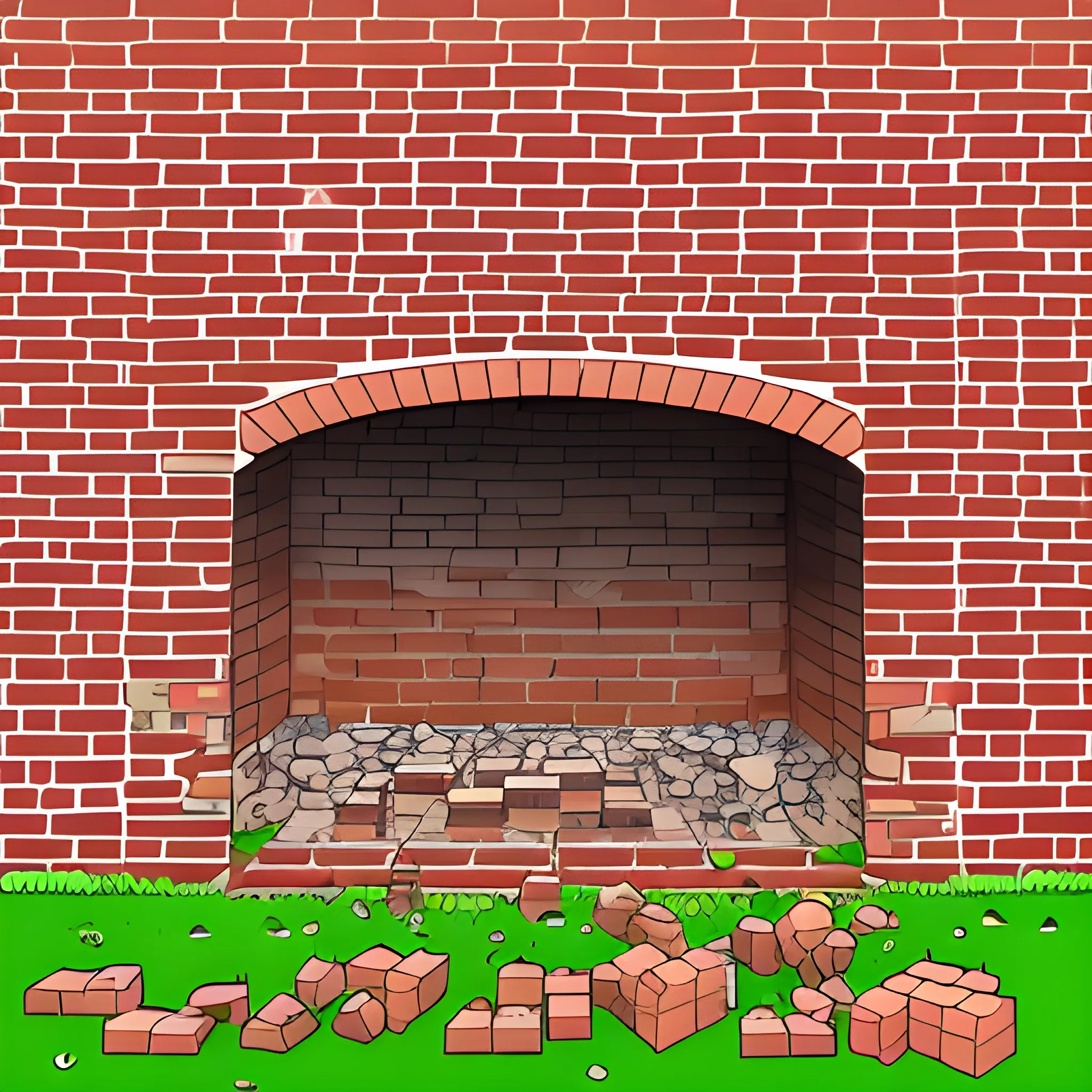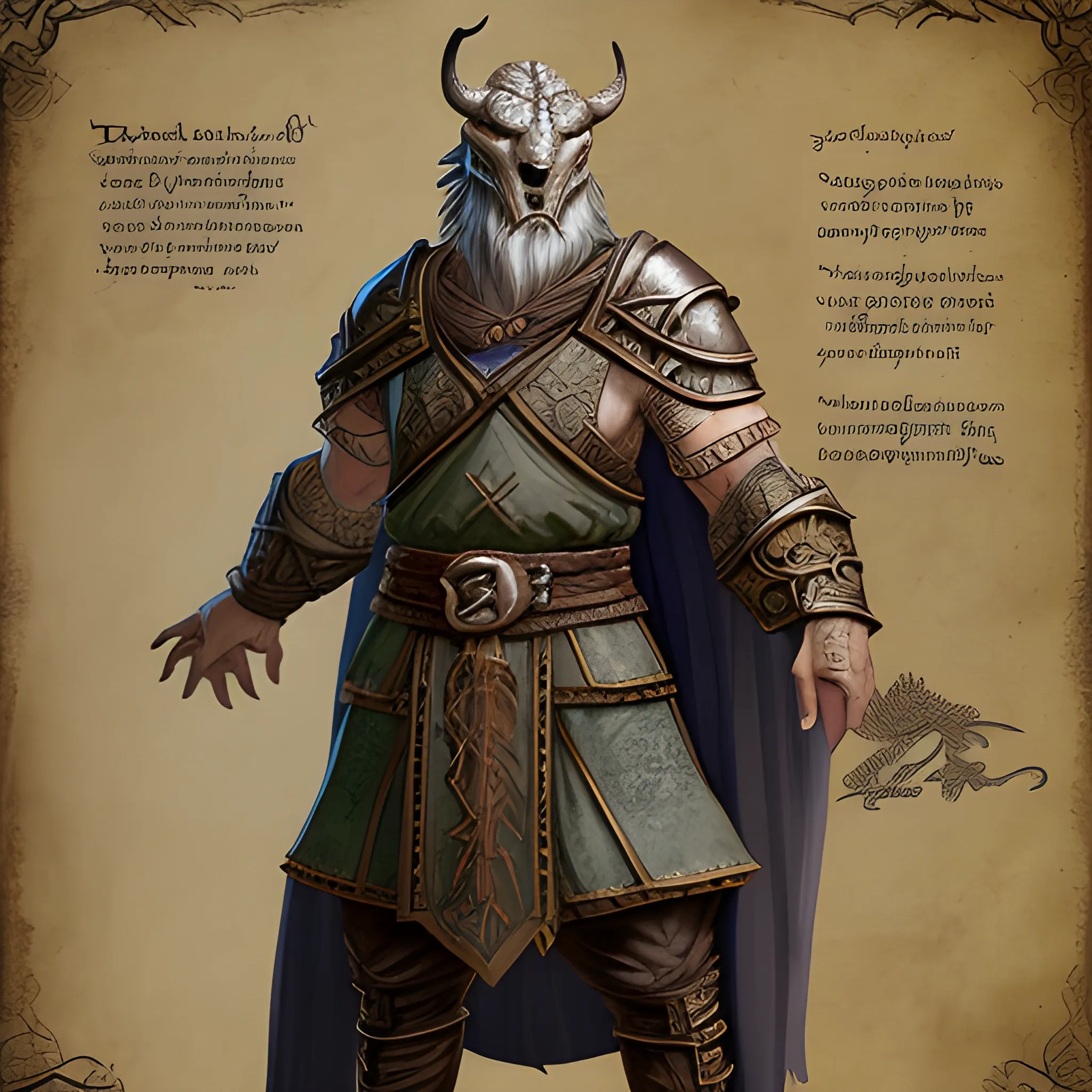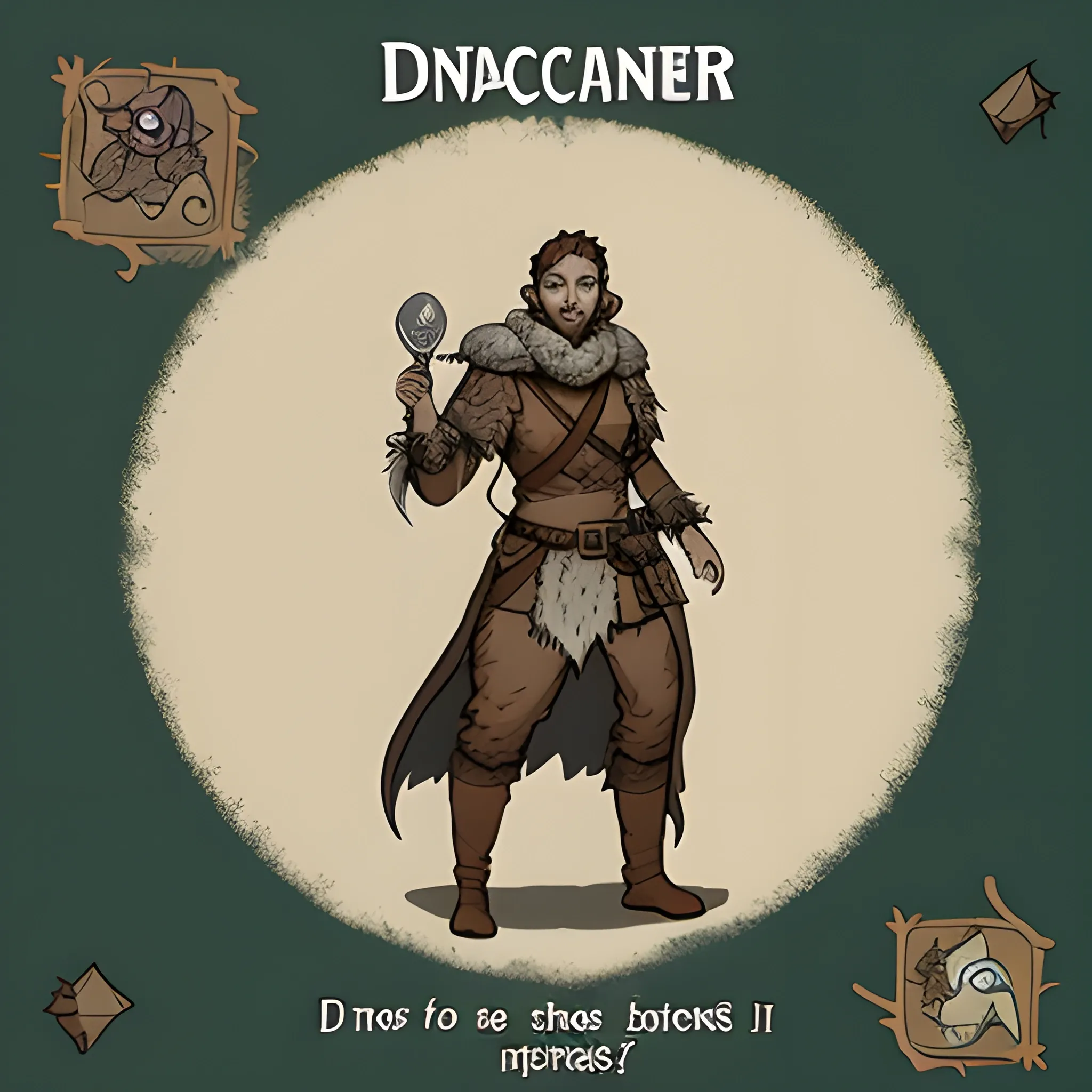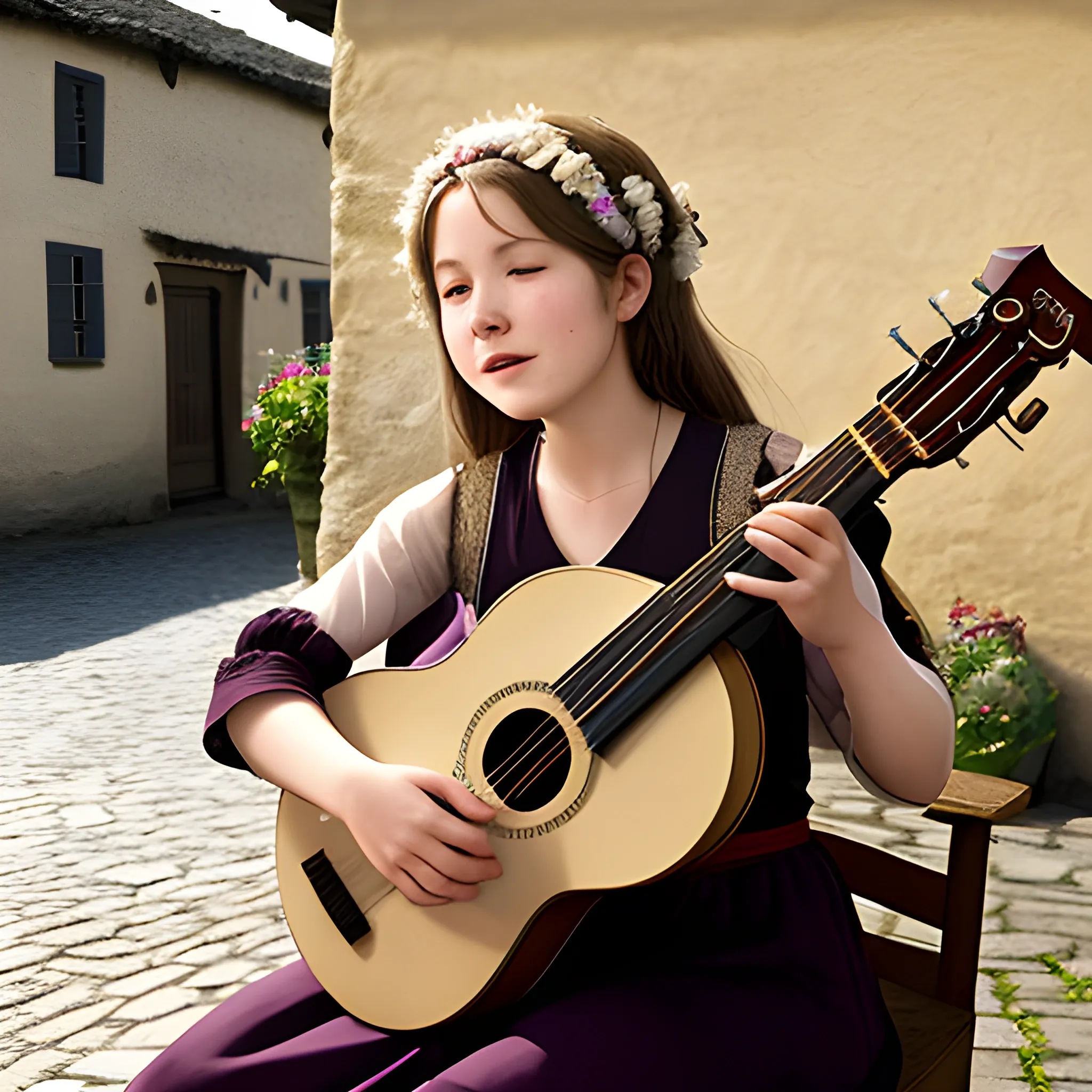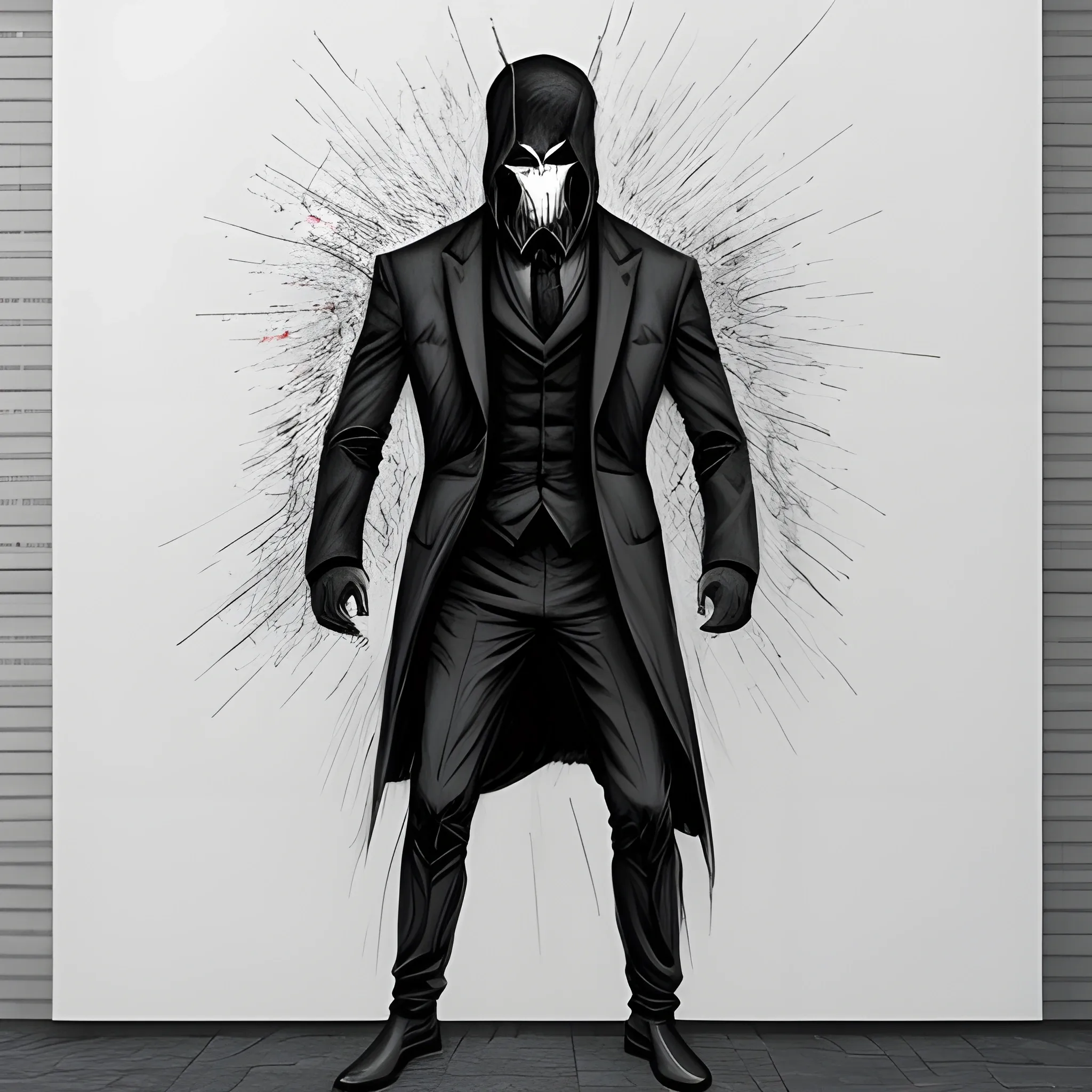acidrebel1

Appearance: The Poisonous Snake is a small to medium-sized reptile with a slender body and a distinctive pattern of scales. Its colors can vary widely , from vibrant and striking patterns to more muted earth tones , helping it blend into its natural surroundings. The snake's head is triangular , and it has a pair of fangs at the front of its mouth , through which it delivers its venom. Features: The Poisonous Snake is known for its venomous bite , which it uses to incapacitate its prey and defend itself from threats. Its venom can vary in potency , from causing mild discomfort to being deadly , depending on the species. While not as powerful as the venom of more dangerous creatures , the Poisonous Snake's bite can still cause considerable harm to unwary adventurers. Habitat: Poisonous Snakes can be found in a wide range of environments , from dense jungles and forests to dry deserts and grasslands. They are highly adaptable creatures and can thrive in various conditions , making them a common sight in untamed wilderness areas. Behavior: The Poisonous Snake is a stealthy predator , relying on its camouflage and patience to ambush its prey. It strikes quickly and accurately , using its venom to immobilize and begin the process of consuming its victim. Poisonous Snakes are generally non-aggressive towards larger creatures , preferring to flee rather than confront a potential threat. Role in the World: In your DND world , Poisonous Snakes could serve as common dangers in the wild , particularly in regions where adventurers explore untamed territories. Druids and rangers might have a connection with these creatures , viewing them as part of the natural balance. Encountering a Poisonous Snake in the wild can be a common and potentially hazardous event for adventurers. While they are generally not aggressive , they may strike if they feel threatened or cornered. Players might need to exercise caution and use skills such as animal handling or survival to avoid confrontations with these venomous reptiles. If adventurers do find themselves bitten , they must act quickly to counteract the effects of the venom and avoid more serious consequences. The presence of Poisonous Snakes in your campaign adds an element of realism and danger to the wilderness. Players will need to be vigilant and watchful during their travels , as the risk of encountering these venomous creatures is ever-present. Poisonous Snakes can also serve as a minor but meaningful challenge , especially for lower-level adventurers , teaching them the importance of preparation and awareness in the untamed wilderness. ,
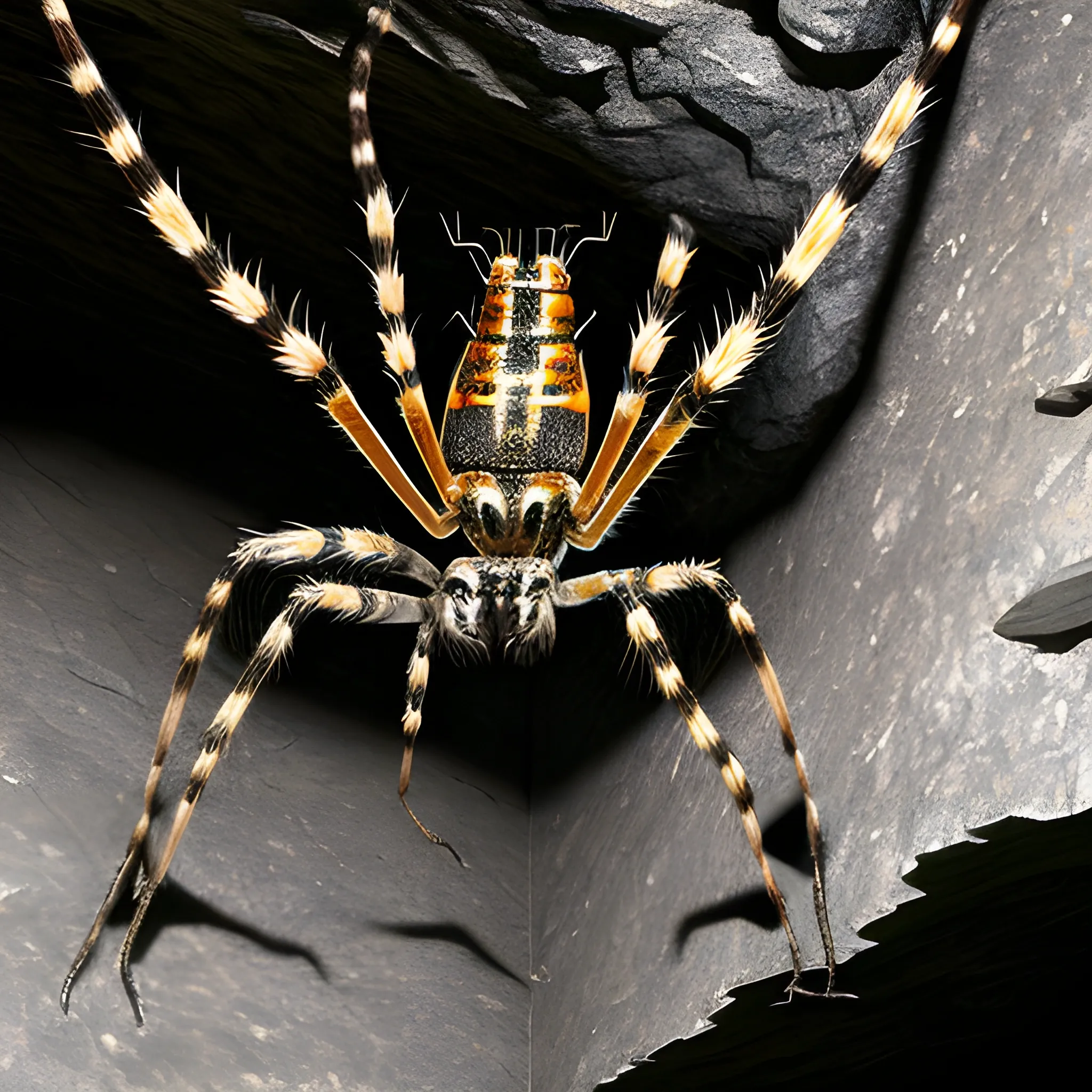
Appearance: The Giant Wolf Spider is an enormous arachnid , resembling a regular wolf spider but scaled up to a terrifying size. It has long , hairy legs , and its body can be up to 3 feet in length. The spider's exoskeleton is a mix of dark brown and black , camouflaging it in shadows and making it hard to spot in dimly lit environments. Its multiple eyes gleam with an eerie luminescence , providing it with excellent night vision. Features: Giant Wolf Spiders possess venomous fangs that they use to paralyze their prey. While their venom is not usually fatal to human-sized creatures , it can cause temporary paralysis and intense pain. They are incredibly agile and quick , making them adept ambush predators. Habitat: Giant Wolf Spiders are most commonly found in dark and damp environments , such as caves , forests , and subterranean tunnels. They are skilled at weaving complex webs that serve as both traps for their prey and a means to detect nearby movement. Behavior: These arachnids are solitary creatures and prefer to hunt alone. Despite their size , they are surprisingly stealthy and capable of stalking their prey unnoticed until they strike. They are skilled climbers and can scale walls and ceilings with ease. Role in the World: In your DND world , Giant Wolf Spiders might be common threats in certain regions , especially in dense forests or caves. They could be encountered as natural inhabitants of the wilderness or serve as guardians to ancient ruins and abandoned places. Their venomous bite and ability to ensnare their prey in webs make them formidable foes for adventurers. Encountering a Giant Wolf Spider in your campaign could lead to tense and suspenseful moments. The spiders might ambush adventurers , trying to paralyze them with their venom before delivering a deadly bite. Players might need to exercise caution and utilize strategies to counter the spider's agility and web traps effectively. Additionally , the presence of Giant Wolf Spiders can add an element of danger and fear to the wild and untamed areas of your world , making players wary of what lurks in the shadows and the darkness. ,

Imagine a depiction of the Holy Trinity that exudes a cool and dark atmosphere , blending elements of mystery and reverence. In this portrayal , envision a cosmic backdrop , a vast and infinite expanse of deep , velvety darkness sprinkled with distant stars. At the center of this cosmic void , imagine three figures emanating an ethereal glow. The Holy Trinity—Father , Son , and Holy Spirit—is symbolized by three imposing , shadowy figures , each distinct yet intertwined. The Father , portrayed as a formidable silhouette , exudes an aura of ancient wisdom and cosmic authority. His eyes , though obscured , shimmer with divine knowledge. The Son , a mysterious figure with a cool , otherworldly radiance , stands at the forefront , cloaked in a flowing garment that seems to absorb and reflect the darkness around. The Holy Spirit , depicted as a swirling , enigmatic mist , weaves through the scene , connecting the figures and adding an air of mystique. To enhance the cool and dark ambiance , subtle celestial patterns and symbols may be etched into the shadows , suggesting a connection between the divine and the cosmic forces. The overall aesthetic should evoke a sense of reverence , with a touch of cosmic grandeur , making this depiction of the Holy Trinity both cool and enigmatically dark. ,
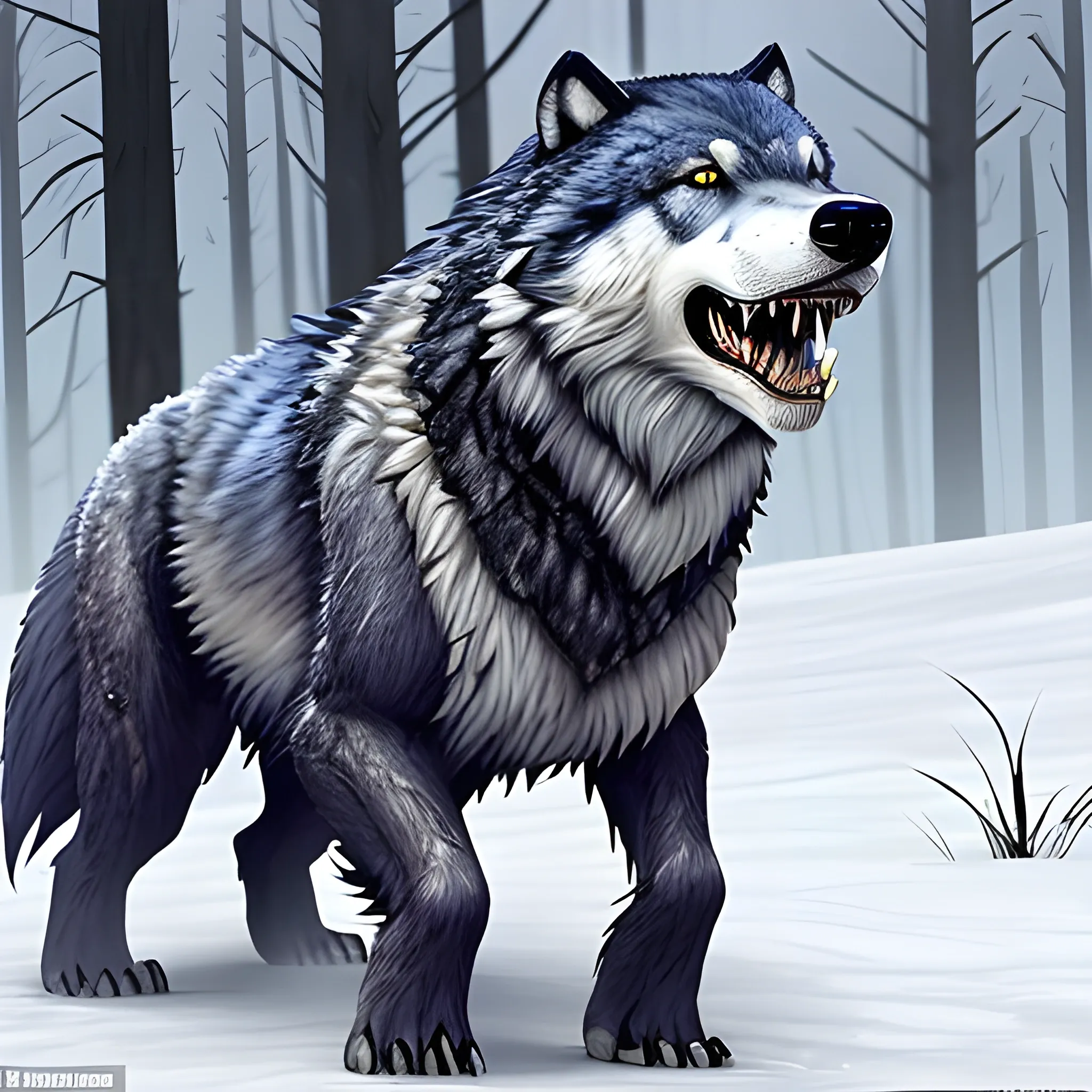
Appearance: The dire wolf is a massive and fearsome creature , closely related to the regular wolf but significantly larger and more imposing. It stands at around 4 to 5 feet tall at the shoulder and can weigh up to 800 pounds or more , dwarfing its smaller cousins. Its fur coat is thick and usually ranges in color from gray to black , providing excellent camouflage in various environments. The dire wolf's powerful jaws and sharp teeth make it a formidable predator in the wild. Features: The dire wolf shares many features with regular wolves but possesses even more enhanced physical capabilities. Its heightened strength , speed , and endurance make it a top-tier predator , capable of taking down large prey with ease. The dire wolf's large , muscular build and powerful limbs give it the advantage of overwhelming its opponents in combat. Habitat: Dire wolves tend to inhabit the wildest and most remote regions of your DND world , far away from civilization. They can be found in dense forests , icy tundras , and even rugged mountainous terrain. As apex predators , they rule over their territories and command respect from other creatures in their domain. Behavior: Like their smaller counterparts , dire wolves are social creatures that often form packs to hunt and survive. They exhibit strong loyalty to their packmates , and the alpha pair leads the group with a mix of intelligence and ferocity. Dire wolves are skilled hunters and work together to bring down formidable prey , such as large mammals and even other monstrous creatures. ,
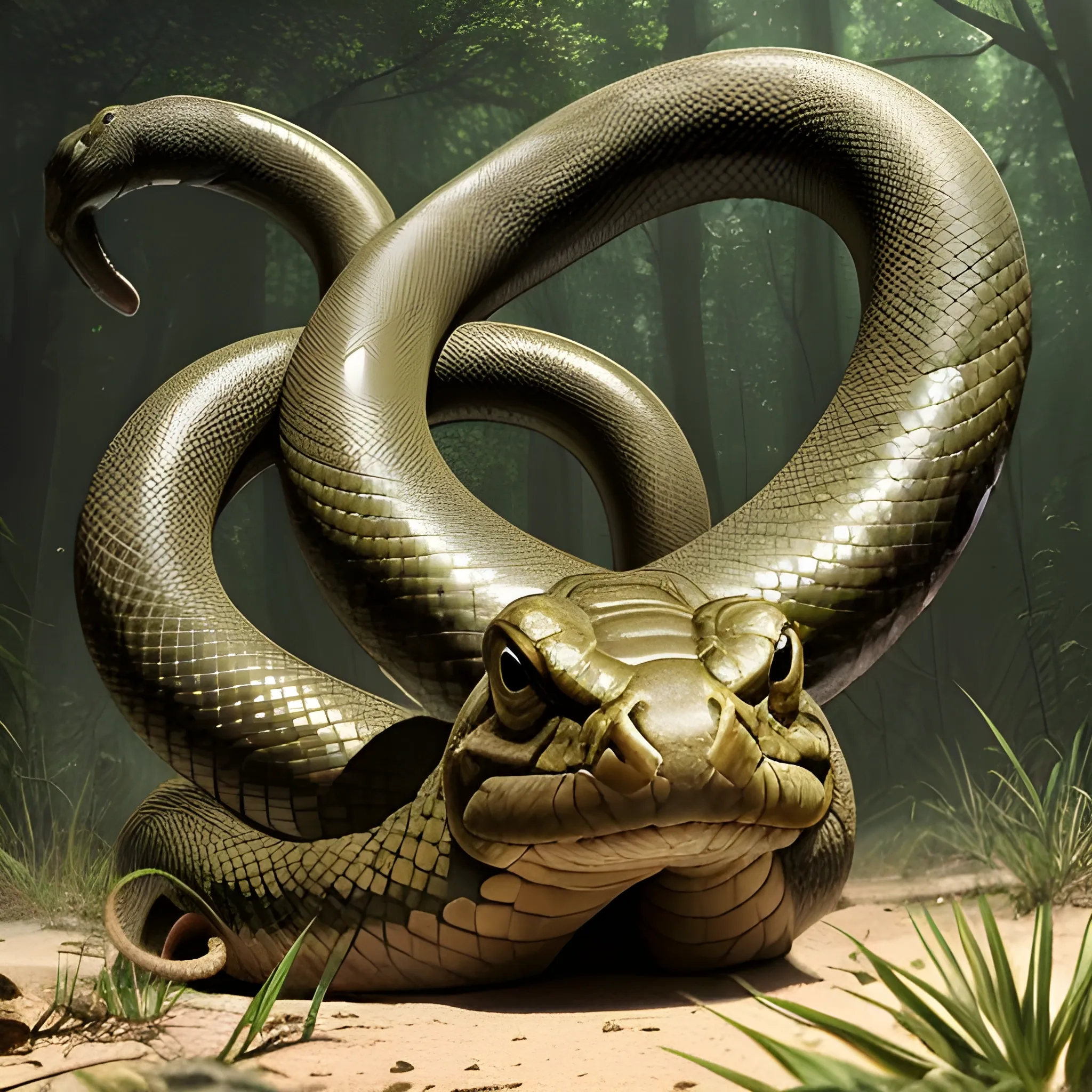
Appearance: The Giant Constrictor Snake is an enormous and intimidating reptile , a massive version of its smaller counterpart. It is a sight to behold , with a length that can reach up to 30 feet or more and a girth that makes it a formidable predator. The snake's scales can have various colors , ranging from earthy browns and greens to patterns that blend in with its environment. Its head is large and triangular , equipped with sharp teeth for grasping and holding its prey. Features: As its name suggests , the Giant Constrictor Snake possesses immense strength , allowing it to overpower and crush prey with its powerful coils. Despite its size , the snake is incredibly agile and swift , capable of striking with lightning speed when attacking. It is a non-venomous predator , relying on its constriction technique to subdue and immobilize its prey before consuming it. Habitat: Giant Constrictor Snakes are usually found in areas with an abundance of large prey , such as dense jungles , swamps , and even underground tunnels or caves. They are equally at home in terrestrial environments or in aquatic habitats , making them versatile hunters. In your DND world , they might inhabit untamed wilderness areas , guarding ancient ruins , or lurking near water sources. Behavior: Like their smaller counterparts , Giant Constrictor Snakes are solitary creatures and prefer to hunt alone. They are opportunistic predators , preying on a wide range of creatures , from smaller animals to larger beasts. Giant Constrictor Snakes have a keen sense of smell , which allows them to detect potential prey from a distance. Role in the World: In your DND world , Giant Constrictor Snakes could be apex predators , feared and respected by other creatures in their territory. They might be guardians of sacred places or serve as the subjects of local legends. Druids and rangers might view them as powerful symbols of the untamed and natural world. Encountering a Giant Constrictor Snake in the wild is a perilous and memorable experience for adventurers. The snake's size and strength make it a deadly foe , capable of overpowering even well-armored individuals. Players must exercise extreme caution and strategic thinking when dealing with these formidable predators. Fighting a Giant Constrictor Snake often involves a combination of ranged attacks , mobility , and teamwork to avoid its crushing coils and deliver damaging blows. The presence of Giant Constrictor Snakes in your campaign can add an element of danger and excitement to wilderness encounters , making players wary of exploring areas where these colossal serpents might lurk. ,
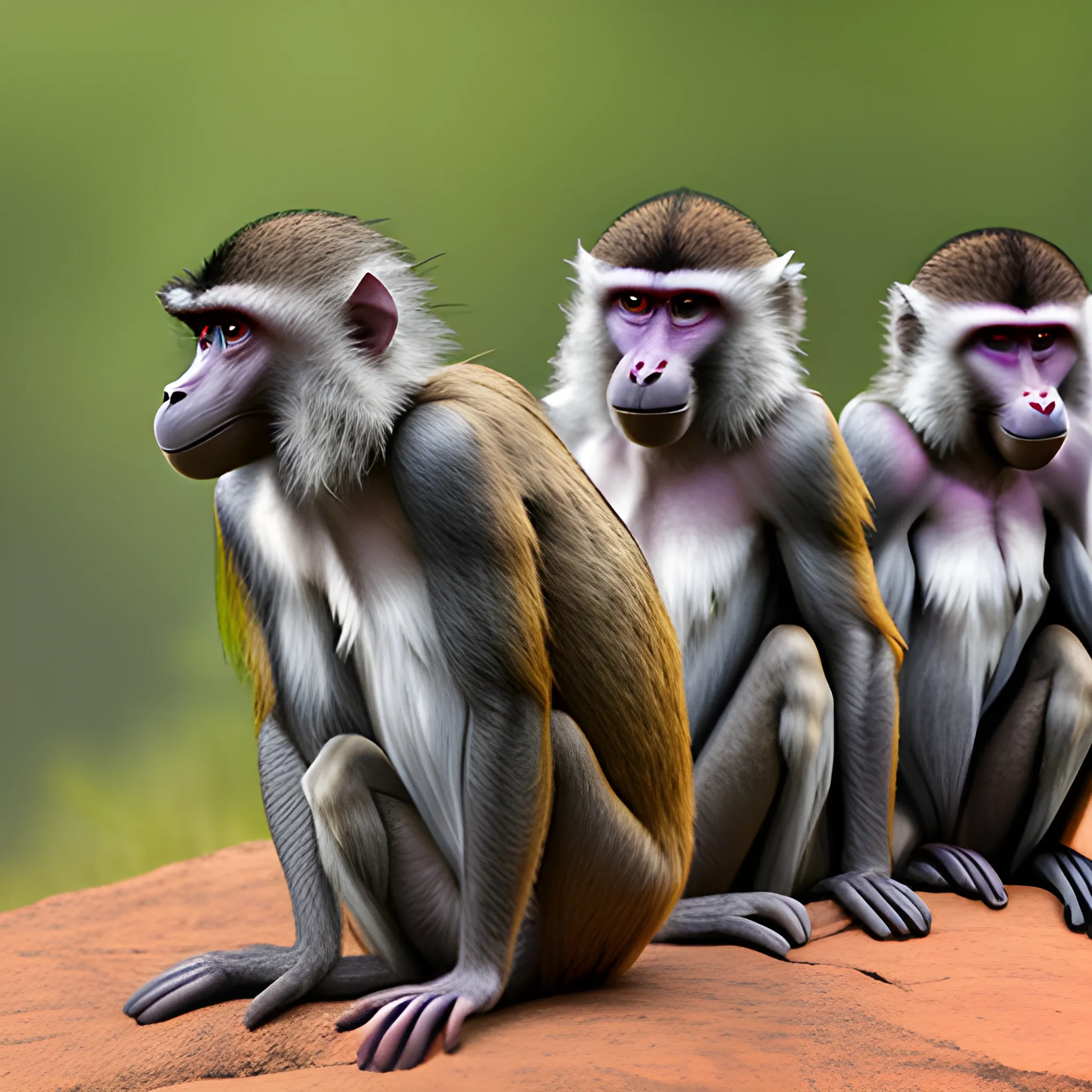
Appearance: The Baboon is a medium-sized primate with a distinctive and charismatic appearance. It has a robust and muscular body , covered in short fur that can range in color from brown to gray or even olive-green. Baboons have a dog-like snout , sharp teeth , and a hairless face with prominent cheek pouches , which they use to store food. They have long arms and powerful legs , allowing them to move quickly and with agility. Features: Baboons are highly social creatures , living in close-knit troops that can consist of a few individuals to larger groups. Their intelligence and adaptability enable them to survive in various environments , from lush jungles to arid savannahs. They are known for their strong social hierarchy and complex communication , using vocalizations , gestures , and facial expressions to convey emotions and intentions. Habitat: Baboons are versatile animals that can thrive in a range of habitats , including forests , grasslands , and mountainous regions. They are often found near water sources , as they require regular access to drinking water. In your DND world , baboons might inhabit areas with lush vegetation or live in proximity to humanoid settlements , scavenging for food scraps. Behavior: Baboons are opportunistic omnivores , with a varied diet that includes fruits , leaves , seeds , insects , and small animals. They are skilled climbers and can use their agility to escape predators or reach high-up food sources. Baboons are known for their playfulness , engaging in social interactions , grooming , and even games with each other. Role in the World: In your DND world , baboons could serve as a part of the natural ecosystem or be associated with certain deities or nature spirits. Druids and rangers might have a special connection with baboons , viewing them as symbols of adaptability and community. Encountering baboons in the wild could present various opportunities for adventurers. They might have non-combat interactions with the primates , such as observing their social behaviors or using animal handling skills to communicate with them. Baboons could also play a role in quests involving local tribes or settlements , where their presence might be considered either beneficial or problematic depending on the circumstances. While not inherently aggressive , baboons can defend themselves and their troop if they feel threatened , making it essential for adventurers to approach them with respect and caution. ,

Imagine a blue nitro bottle , its exterior adorned in a vibrant shade of deep blue. The color is intense , almost electric , giving off a sense of energy and potential. The surface of the bottle appears sleek and metallic , reflecting the ambient light in a captivating way. Now , as you observe the bottle , there's a visual illusion that suggests a state of near-explosion. The blue hue seems to intensify near the top , as if the pressure inside is building up to a critical point. There might be subtle distortions in the reflection , creating a dynamic and distorted appearance , as if the container is straining against an invisible force. The contours of the bottle might appear slightly exaggerated , with the shape subtly warping as though it's on the verge of bursting open. The cap or nozzle may seem to be under tension , as if struggling to contain the contained energy within. This illusion of impending explosion adds an element of drama to the visual , making the bottle appear as though it's frozen in a moment of intense anticipation , caught right before a burst of vibrant energy. ,
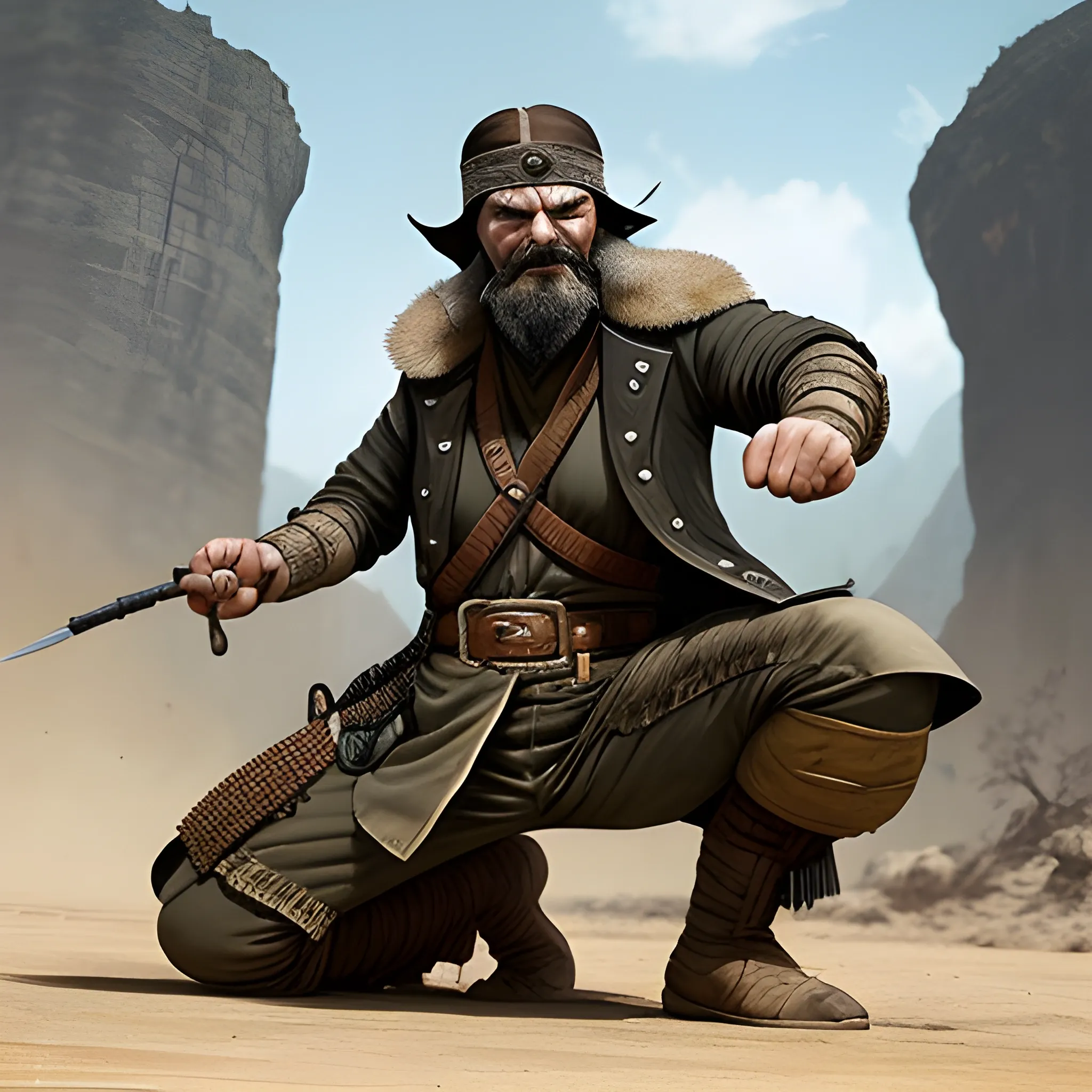
Appearance: The Bandit Leader is a commanding figure , exuding an air of authority and charisma that sets them apart from the ordinary members of their gang. They dress in more elaborate and well-maintained clothing , often adorned with stolen jewelry or symbols of power. Their attire may be a mix of practicality and ostentation , showing off their wealth and status while ensuring they can move freely in combat. The Bandit Leader may have a distinctive and fearsome appearance , with battle scars or an imposing physical presence that demands respect from their followers. Features: The Bandit Leader is not only a skilled fighter but also a cunning strategist. They possess tactical knowledge , able to plan and execute ambushes and raids with precision. The Bandit Leader is usually armed with high-quality weapons , whether a finely crafted sword or a specially customized bow. Their combat skills and combat prowess make them a formidable adversary in one-on-one combat , and they often lead from the front during raids. Habitat: The Bandit Leader's territory is typically a well-hidden and fortified stronghold , strategically chosen to offer both defense and escape routes. These hideouts may be deep in the wilderness , atop rocky cliffs , or concealed in dense forests. In your DND world , the Bandit Leader might operate from a secluded fortress , a smuggler's den , or even from within the heart of a city , using their influence to conceal their true identity. Behavior: The Bandit Leader is a cunning and ambitious individual , driven by a desire for wealth , power , and control. They are ruthless in their pursuit of dominance , often betraying or eliminating rivals to consolidate their position. The Bandit Leader can be charismatic and manipulative , skilled at inspiring loyalty among their followers through promises of riches and protection. However , they are also quick to punish those who fail them or show any signs of disloyalty. Role in the World: In your DND world , the Bandit Leader serves as the central antagonist to adventurers seeking to thwart criminal activity and restore law and order. They may be the head of a notorious bandit gang , a powerful crime lord with influence over multiple territories , or a charismatic rebel leader opposing a tyrannical regime. Encountering the Bandit Leader in your campaign can be a climactic and high-stakes event , representing the culmination of the adventurers' efforts to confront criminal activity and protect innocent lives. The Bandit Leader's defeat might serve as a major turning point in the campaign , leading to the dismantling of the gang or the exposure of a larger conspiracy. The presence of a Bandit Leader in your campaign world adds an element of intrigue and danger to the setting. Players will need to gather information , form alliances , and carefully plan their approach when confronting such a formidable foe. Engaging with the Bandit Leader and their gang can create thrilling and memorable encounters , providing players with opportunities for cunning negotiation , daring heists , and epic battles that will shape the course of your DND world's history ,
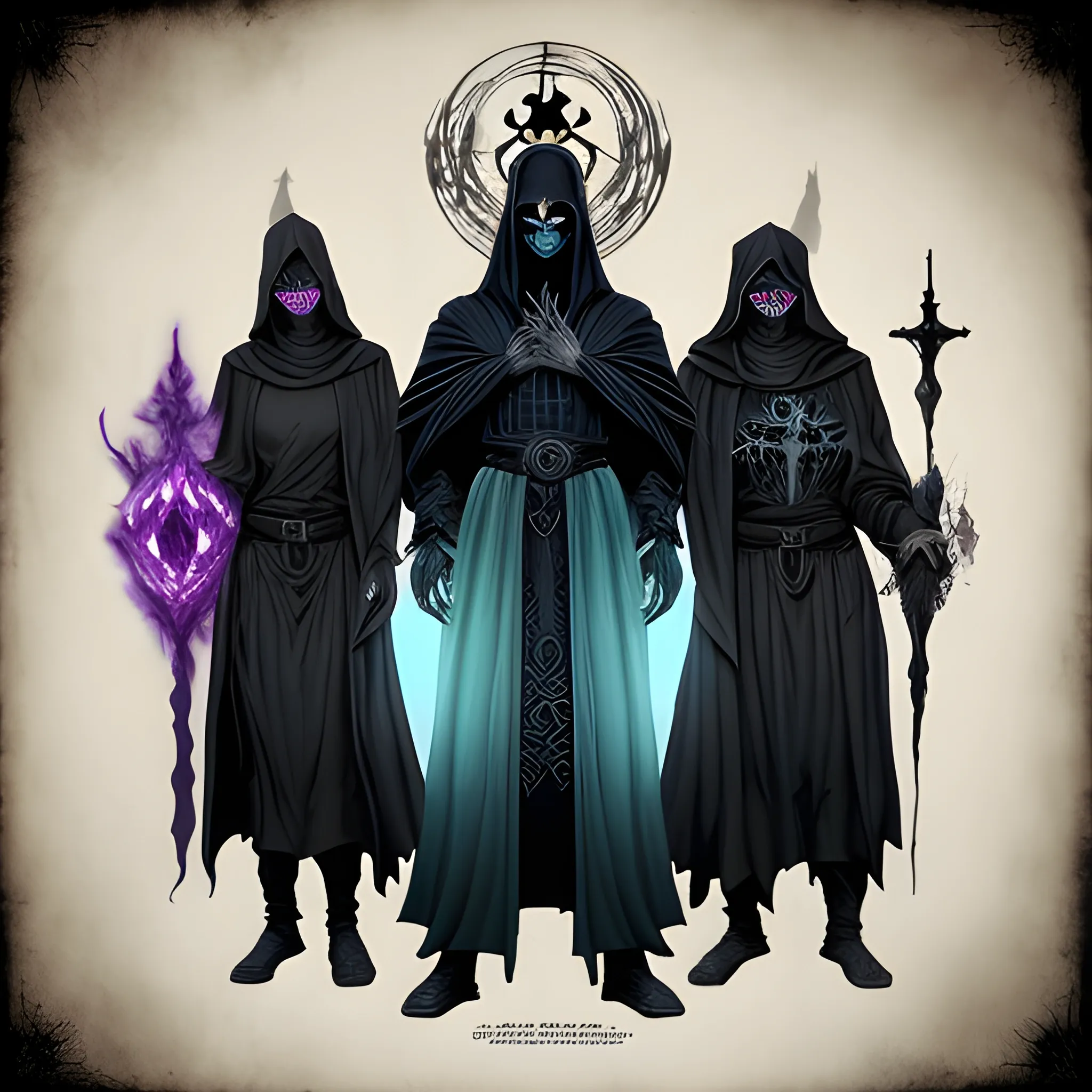
Dark Attire: The cultist wear long , flowing robes in shades of deep purple , black , or dark gray. The robes are often adorned with occult symbols and sigils associated with necromantic magic and Malachi's dark influence. The hoods of their robes are typically pulled up , casting shadows over their faces , giving them an air of mystery and menace. Face Coverings: Some cultists wear face coverings or masks , further obscuring their features. These coverings often feature unsettling designs , such as skeletal faces or demonic visages , symbolizing their allegiance to death and darkness. Occult Accessories: Cultists may wear various occult accessories , such as bone necklaces , finger bones , or amulets adorned with dark gems or symbols. These items are believed to channel the powers of necromancy and connect the wearer to the forces of evil. Pallid Skin: Prolonged exposure to dark magic and their devotion to Malachi may give the cultists' skin a sickly pallor , further emphasizing their otherworldly appearance. Glowing Eyes: In some cases , the eyes of the cultists may glow with an unnatural or eerie light , hinting at their connection to the dark powers they serve. The glow can be a pale blue , sickly green , or even crimson , depending on the nature of their necromantic abilities. Ritualistic Tattoos: Some cultists bear ritualistic tattoos etched into their skin , marking their allegiance to Malachi and the dark arts. These tattoos often depict ominous symbols , arcane runes , or images associated with death and decay. Feral Traits: As a result of their embrace of dark powers , some cultists may display feral traits , such as elongated canine teeth or claw-like nails , reminiscent of creatures of the night. Overall , the appearance of Malachi's cultists is haunting and unsettling , with an aura of darkness and malevolence. Their attire , accessories , and physical features convey their allegiance to the fallen Aasimar and their commitment to furthering his nefarious plans. As they move in shadows and secrecy , they pose a significant threat to the world , ready to carry out their master's bidding and plunge Lumina Isle into everlasting darkness. ,
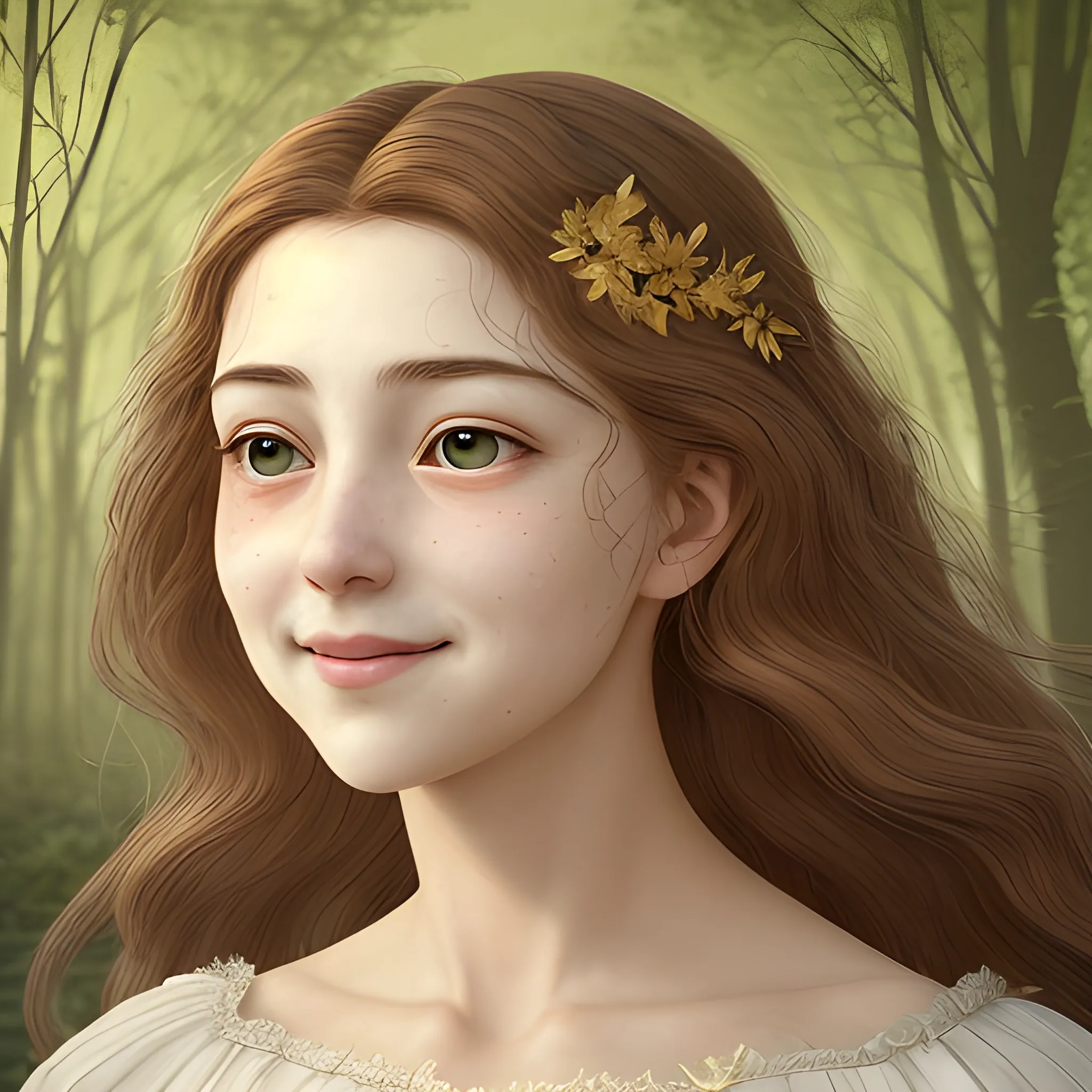
Isabella has a graceful and refined presence , her features reflecting her human lineage. Her fair complexion bears a soft , rosy hue , complementing her warm and compassionate nature. Though touched by the curse , her natural beauty still shines through , albeit with a touch of sorrow in her gaze. Her eyes , once sparkling with life and vitality , now hold a hint of melancholy. They are a mesmerizing shade of hazel , with flecks of gold and green that mirror the hues of a tranquil forest. They radiate kindness and depth , reflecting the empathy and understanding that she embodies. Cascading locks of chestnut-brown hair frame her face , flowing in gentle waves down to her shoulders. The hair retains its luster , albeit somewhat dulled by the curse. It carries a wistful charm , as if whispering tales of a forgotten joy. Isabella's figure is slender and graceful , her movements carrying an elegance befitting her noble upbringing. She adorns herself in simple yet tasteful garments , favoring flowing dresses of muted colors that match the melancholic air that surrounds her. Her countenance , once radiant with joy and laughter , now bears a touch of sadness. Though the curse has taken its toll , her inner strength and resilience still shine through , and a warm smile can occasionally grace her lips , offering glimpses of the joy she once experienced. Despite the Veil of Shadows that cloaks her , Isabella's beauty remains a poignant reminder of the vibrant and loving person she once was. Her appearance serves as a reflection of the tragedy that has befallen her and the enduring spirit that she carries within. ,
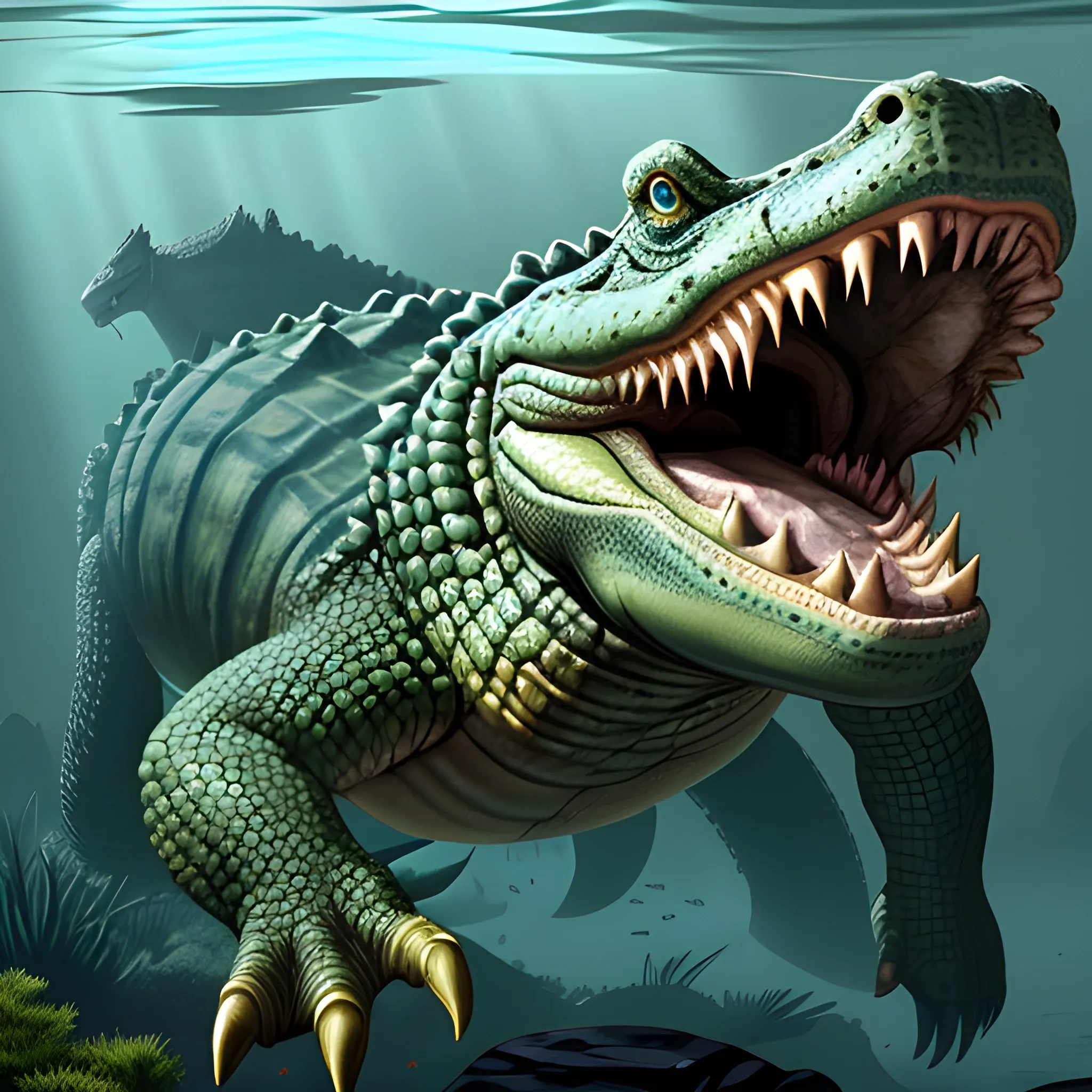
Appearance: The Giant Crocodile is an enormous and monstrous reptile , dwarfing its smaller counterpart in size and power. It has a massive body covered in thick and rugged scales that can range from dark greens to deep browns , perfectly camouflaging it in its aquatic habitat. Its long and powerful tail serves as a formidable weapon , enabling it to swim swiftly and strike with devastating force. The Giant Crocodile's eyes gleam with an intelligence and predatory instinct that sets it apart from ordinary creatures. Features: The Giant Crocodile is a colossal apex predator , boasting immense strength and resilience. Its jaws are filled with rows of sharp teeth , capable of crushing bones and armor with ease. Unlike its smaller kin , the Giant Crocodile is fully adapted for a purely aquatic lifestyle , rarely venturing onto land except to bask in the sun or establish dominance in its territory. Habitat: Giant Crocodiles prefer large bodies of freshwater , such as expansive rivers , deep lakes , and marshlands. They are territorial creatures , claiming vast stretches of water as their hunting grounds. In your DND world , they could inhabit mysterious swamps or hidden lagoons , guarding ancient secrets or treasures. Behavior: As ambush predators , Giant Crocodiles are masters of surprise attacks. They remain mostly submerged , with only their eyes and nostrils visible above the water's surface. When potential prey ventures too close , the Giant Crocodile strikes with astonishing speed and strength , dragging victims underwater to drown or consume. Role in the World: In your DND world , Giant Crocodiles could be legendary creatures , feared and respected by both locals and adventurers alike. They might be considered as guardians of ancient temples or revered as avatars of primordial nature. Druids and rangers might see them as symbols of untamed and primal power. Encountering a Giant Crocodile in the wild is a dangerous and potentially deadly event for adventurers. Its size and power make it an incredibly challenging opponent , even for a well-prepared party. Players must exercise extreme caution when navigating bodies of water known to be inhabited by Giant Crocodiles , as these creatures can deliver swift and lethal attacks. The presence of Giant Crocodiles in your campaign can create an atmosphere of danger and trepidation when exploring swampy and aquatic environments. Players will need to be constantly vigilant and employ strategic thinking to avoid becoming victims of these monstrous reptiles. Crossing waterways or searching for hidden artifacts in areas known to be Giant Crocodile territory can create a sense of high stakes and urgency in your DND world. ,
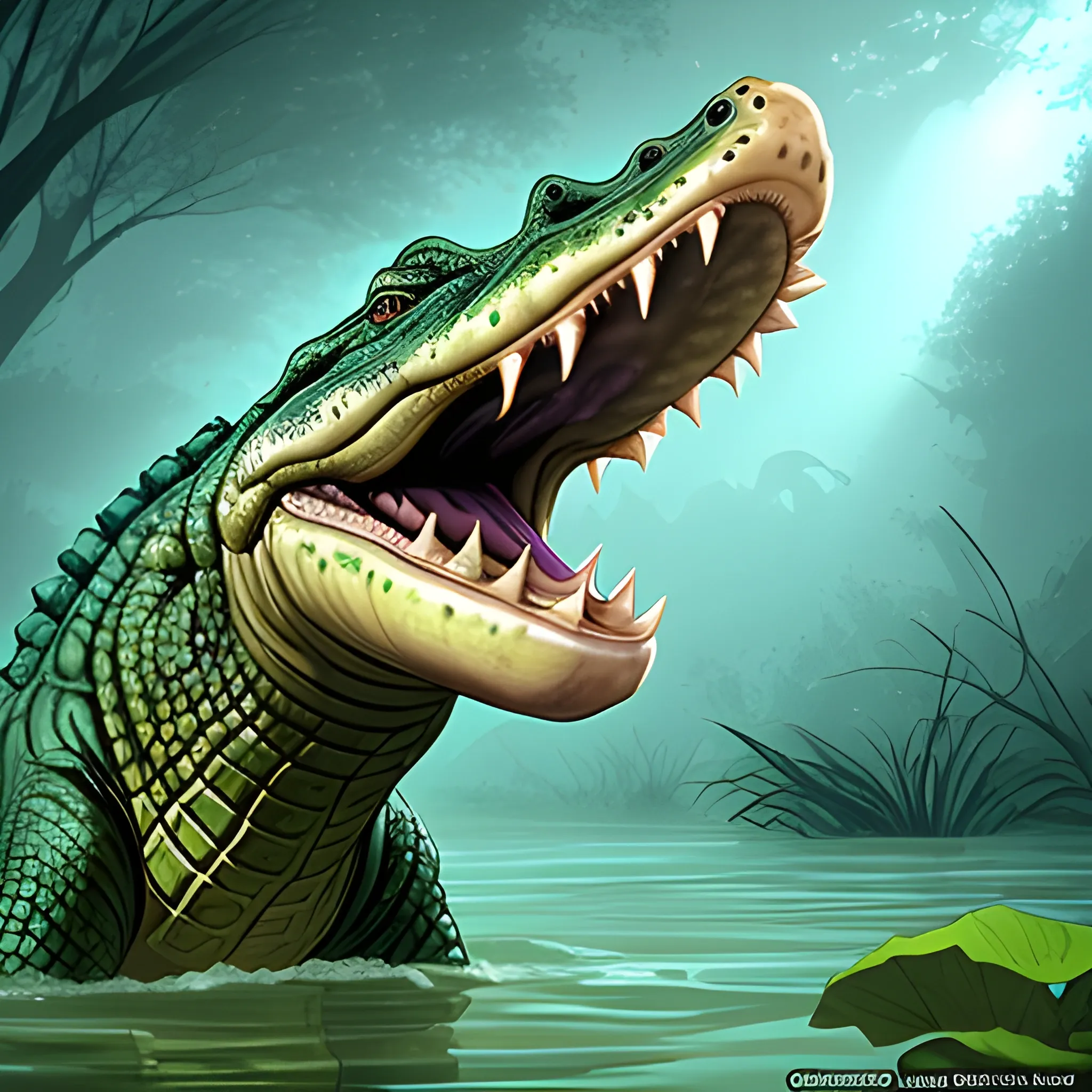
Appearance: The Crocodile is a large and powerful reptile , known for its distinctive long snout , sharp teeth , and armored body. Its scales can have various shades of green , brown , or gray , blending in with the murky waters and marshes it inhabits. The Crocodile's eyes and nostrils are positioned on the top of its head , allowing it to remain mostly submerged while still keeping a watchful eye on potential prey. Features: The Crocodile is an apex predator in aquatic environments , using its powerful jaws to seize and drag its prey underwater. It possesses incredible strength and resilience , making it a fearsome hunter and a challenging opponent for adventurers who venture into its territory. Crocodiles are well-adapted for both land and water , able to move quickly on land and remain submerged for extended periods. Habitat: Crocodiles are typically found in freshwater bodies such as rivers , lakes , and swamps , though they can also inhabit saltwater habitats like estuaries and coastal areas. They are highly territorial creatures , claiming areas of water as their own hunting grounds. In your DND world , they might be guardians of hidden treasures or sacred places. Behavior: Crocodiles are ambush predators , relying on stealth and patience to catch their prey unaware. They lie submerged , often with only their eyes and nostrils visible , and strike with lightning speed when an opportunity presents itself. Crocodiles are more aggressive during their breeding season or if they feel threatened. Role in the World: In your DND world , Crocodiles could be symbols of primal power and ancient guardians. They might be revered or feared by local tribes as creatures of great significance in their myths and beliefs. Druids and rangers might have a connection with Crocodiles , viewing them as an essential part of the natural order. Encountering a Crocodile in the wild can be a dangerous and adrenaline-pumping event for adventurers. Players must be cautious around bodies of water known to be inhabited by Crocodiles , as these creatures can launch surprise attacks. Crossing rivers or exploring swampy terrain could become treacherous , and players will need to be vigilant to spot the telltale signs of lurking predators. The presence of Crocodiles in your campaign adds an element of danger and excitement to aquatic and marshy environments. They can create memorable and intense encounters , challenging players to use their wits and skills to outmaneuver and defeat these fearsome reptilian predators. Additionally , the idea of crossing treacherous waters or exploring hidden marshlands where Crocodiles dwell can evoke a sense of adventure and exploration in your DND world. ,
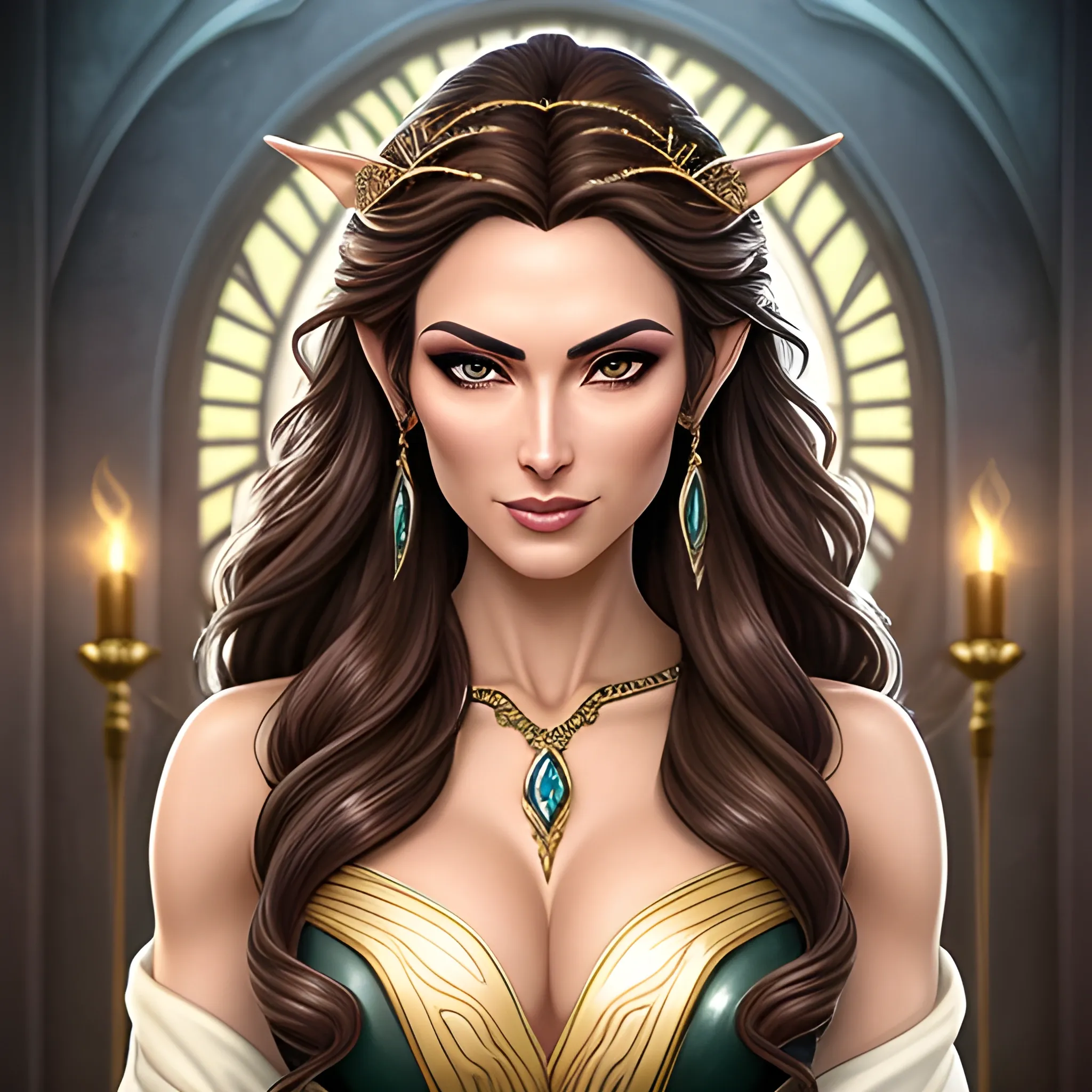
Amara Brightwood , the daughter of Lord Elric Brightwood and the late Isabella , is a young woman who embodies a unique blend of her parents' characteristics and talents. Here is a description of Amara's appearance and age: Amara stands at the cusp of adulthood , having recently reached the age of eighteen. Her presence carries a sense of quiet determination and curiosity. Her youthful energy is tempered by the wisdom she has gained through her family's experiences and the challenges she has faced. With flowing , chestnut-brown hair that falls in loose waves around her shoulders , Amara bears a striking resemblance to her late mother. The rich hues of her hair catch the light , adding depth and dimension to her appearance. Her hair is often adorned with delicate , nature-inspired accessories , reflecting her connection to her elven heritage. Amara's features possess a captivating grace and symmetry. Her eyes , a mesmerizing shade of hazel , seem to mirror her mother's gaze. They hold a sparkle of both intellect and kindness , revealing her sharp intellect and compassionate nature. Her slender nose and softly curved lips add to her overall appeal , conveying a sense of warmth and approachability. While Amara's age places her on the threshold of adulthood , she retains a youthful vitality and enthusiasm for life. Her form exhibits the graceful yet lean build of her elven heritage , with an underlying strength that hints at the inner resilience she has inherited from her family. She typically dresses in attire that combines elements of elven elegance and practicality. Flowing robes in earthy tones and accented with subtle elven motifs reflect her connection to nature and her magical lineage. Her choice of accessories often includes delicate silver jewelry , symbolic of her noble heritage. Amara's age marks a pivotal moment in her life as she navigates the legacy of her family and the challenges she must face. She embodies the potential for growth and transformation , carrying within her the spark of her parents' love and the potential to shape her own destiny in the world of magic and adventure. ,
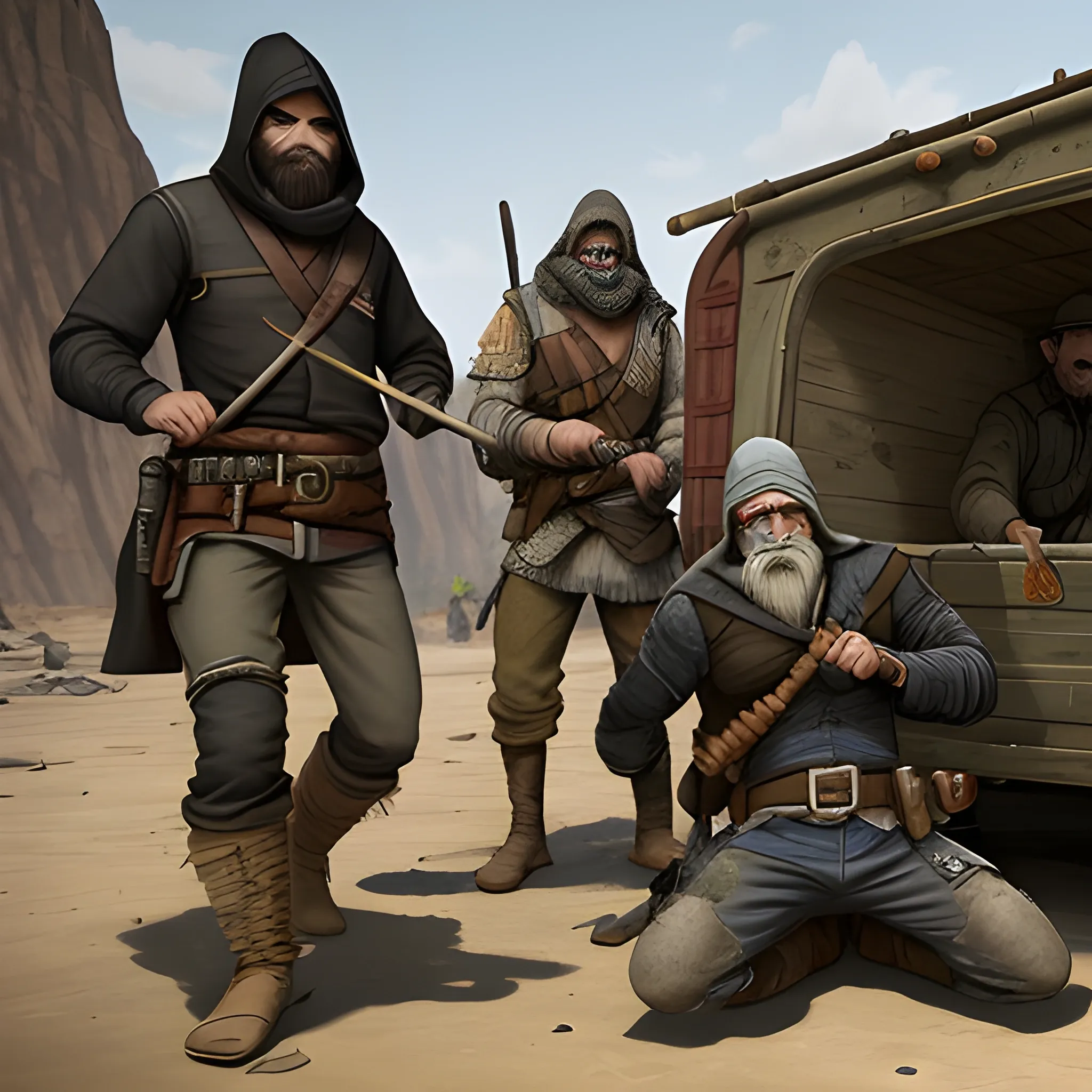
Appearance: The Bandit is a rugged and cunning individual , often dressed in worn and nondescript clothing that allows them to blend in with common folk or the wilderness. They may wear tattered cloaks or hoods to conceal their identity while on the prowl. Their attire is practical , allowing them to move swiftly and quietly during their illicit activities. Bandits often sport an unkempt appearance , with scruffy beards or unkempt hair , reflecting their rough and lawless lifestyle. Features: Bandits are opportunistic criminals , skilled in ambushes , theft , and intimidation. They may wield a variety of weapons , from rusty daggers to notched swords or stolen bows , depending on their individual expertise. While they lack the training and discipline of seasoned soldiers , their resourcefulness and willingness to resort to violence make them dangerous adversaries. Habitat: Bandits are commonly found in lawless or remote regions , where they can operate without interference from authorities. They may establish secret hideouts in caves , abandoned buildings , or hidden forest encampments. In your DND world , they might be part of organized criminal networks , operating out of seedy taverns or disreputable establishments. Behavior: Bandits are typically driven by a desire for wealth and power , willing to prey on the vulnerable and unsuspecting to achieve their goals. They are not afraid to use intimidation and violence to achieve their objectives , making them a menace to travelers and isolated communities. Some bandits may be driven by desperation or a sense of rebellion against authority , while others simply embrace a life of lawlessness. Role in the World: In your DND world , Bandits can be a common and persistent threat to the safety of travelers and the stability of settlements. They may operate independently or as part of larger criminal organizations , profiting from extortion , smuggling , or raiding caravans. Lawful characters , such as paladins and city guards , might consider it their duty to confront and bring these lawbreakers to justice. Encountering Bandits in your campaign can provide opportunities for diverse interactions and moral choices. Players may face the dilemma of showing mercy to those driven to crime by hardship or rooting out dangerous and malicious criminals. Bandit encounters can range from tense negotiations to thrilling skirmishes , offering a chance for characters to display their skills , morals , and resourcefulness. The presence of Bandits in your campaign world adds an element of danger and unpredictability to travel and exploration. Players will need to be cautious when traversing remote areas or encountering strangers on the road. Bandit encounters can serve as minor challenges for lower-level parties or become more significant threats when part of a larger , more organized criminal enterprise. Regardless of their role , Bandits provide an opportunity to explore themes of law and order , survival , and the blurred lines between good and evil in your DND world. ,

Appearance: The bartender is a surprising sight , as it is an Orc , typically known for their fierce and warrior-like appearance. Despite the common stereotype , this Orc bartender breaks the mold with a warm and inviting demeanor. Standing behind the bar with a muscular frame and greenish-gray skin , they greet patrons with a friendly smile , showcasing their sharp tusks that add character to their face. Their strong hands deftly handle bottles and mugs with surprising gentleness , a stark contrast to their intimidating appearance. Features: This Orc bartender is not only strong but possesses a natural talent for putting people at ease. They have a deep and resonant voice that carries through the tavern , captivating patrons with their tales and jokes. Despite the language barrier that might exist between some patrons and the Orc , they are skilled at communicating through gestures and expressions , ensuring everyone feels welcome. Habitat: This Orc bartender can be found in a diverse range of establishments , from rowdy taverns in bustling cities to cozy inns tucked away in the countryside. Their presence bridges the gap between different races and cultures , making them an essential figure in places where adventurers and travelers gather. In your DND world , this Orc bartender might be running a tavern on the outskirts of a mixed-race settlement or in an adventurers' haven near a renowned dungeon. Behavior: While fierce in battle , this Orc bartender has chosen a path of hospitality and community. They genuinely care about the well-being of their patrons and take pride in creating an enjoyable atmosphere. Their ability to read people serves them well in handling various situations that may arise within the tavern , ensuring that disputes are quelled before they escalate. Role in the World: In your DND world , this Orc bartender defies stereotypes and acts as a symbol of unity among different races. They challenge preconceived notions and prejudices , using their role to promote understanding and camaraderie. Adventurers may find in them an unexpected ally or a source of wisdom as they navigate the complexities of the world. Encountering an Orc bartender in your campaign can be a delightful and thought-provoking experience for players. It presents an opportunity to explore themes of acceptance , tolerance , and the potential for individuals to rise above cultural expectations. The interactions with this unique bartender can lead to interesting role-playing moments , offering a chance for players to challenge their characters' biases and assumptions. The presence of an Orc bartender in your campaign world adds depth and complexity to the portrayal of different races and cultures. It enriches the world by showcasing that individuals are not bound by their appearances , and their choices and actions can have a profound impact on the communities they are a part of. This NPC can become a memorable and cherished character in your DND campaign , leaving a lasting impression on players as they continue their adventures. ,
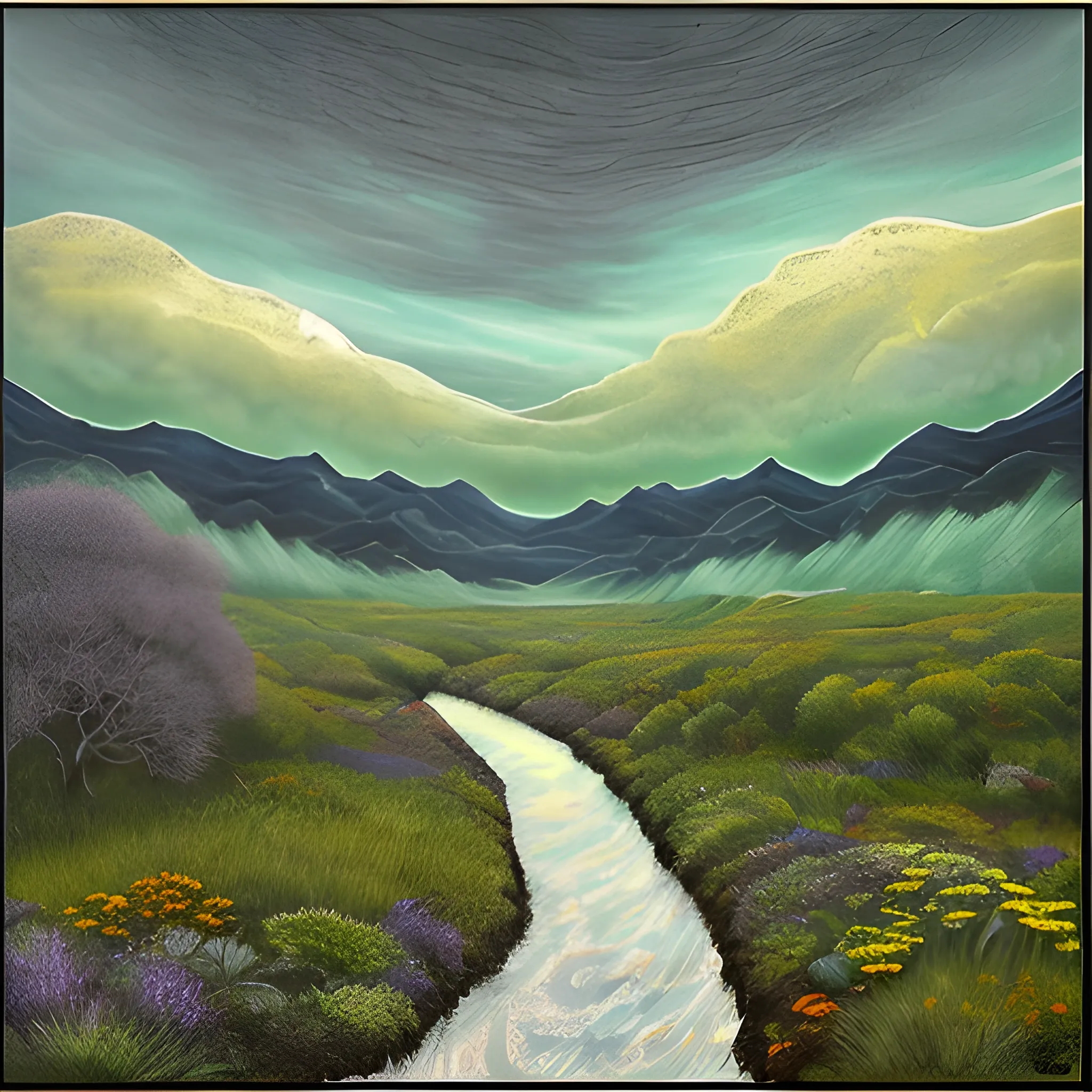
The picture is divided into two distinct halves , visually representing the duality of good and bad. Left Half (Good): On the left side of the picture , there's a serene and ethereal scene. A bright , golden sun shines radiantly in the sky , casting warm and gentle light across a tranquil landscape. Lush green fields stretch into the distance , dotted with vibrant flowers and trees. A calm river flows gently through the scene , reflecting the sky's brilliance. In the foreground , there are diverse and harmonious groupings of people engaged in acts of kindness and cooperation. They're helping each other , sharing resources , and engaging in activities that promote well-being and unity. There are images of people volunteering , comforting each other , and working together to build a thriving community. The color palette is dominated by soft , warm tones like gold , green , and pastel shades , creating an atmosphere of positivity , compassion , and hope. Right Half (Bad): On the right side of the picture , there's a stark contrast to the left side. The sky is dark and stormy , with ominous clouds that obscure the light. The landscape is desolate and barren , with withered trees and dry , cracked earth. The river is polluted and toxic , representing decay and destruction. In this half , there are depictions of conflict , greed , and suffering. People are shown engaging in acts of cruelty , aggression , and selfishness. There are symbols of oppression , inequality , and environmental degradation. The scene conveys a sense of chaos and despair , with fractured relationships and a lack of harmony. The color palette is dominated by cool , harsh tones like deep blues , grays , and murky shades , evoking feelings of darkness , negativity , and discord. Center (Balance and Interaction): At the center of the picture , where the two halves meet , there's a subtle blending of colors and elements. This represents the inherent connection between good and bad , and how they coexist in the real world. There's a small bridge that spans the river , symbolizing the potential for communication and understanding between opposing forces. Some people from each side are crossing the bridge , showing that there can be movement and transformation. This central area serves as a reminder that the boundaries between good and bad can be fluid , and individuals have the capacity to make choices that influence the balance between the two. Overall Theme: The picture encapsulates the complexities of human nature and the world we inhabit. It reflects the ongoing struggle between positive and negative forces , while also highlighting the potential for growth , change , and finding common ground. It encourages viewers to consider the shades of gray that exist between the extremes and to contemplate the choices they make in their own lives. ,
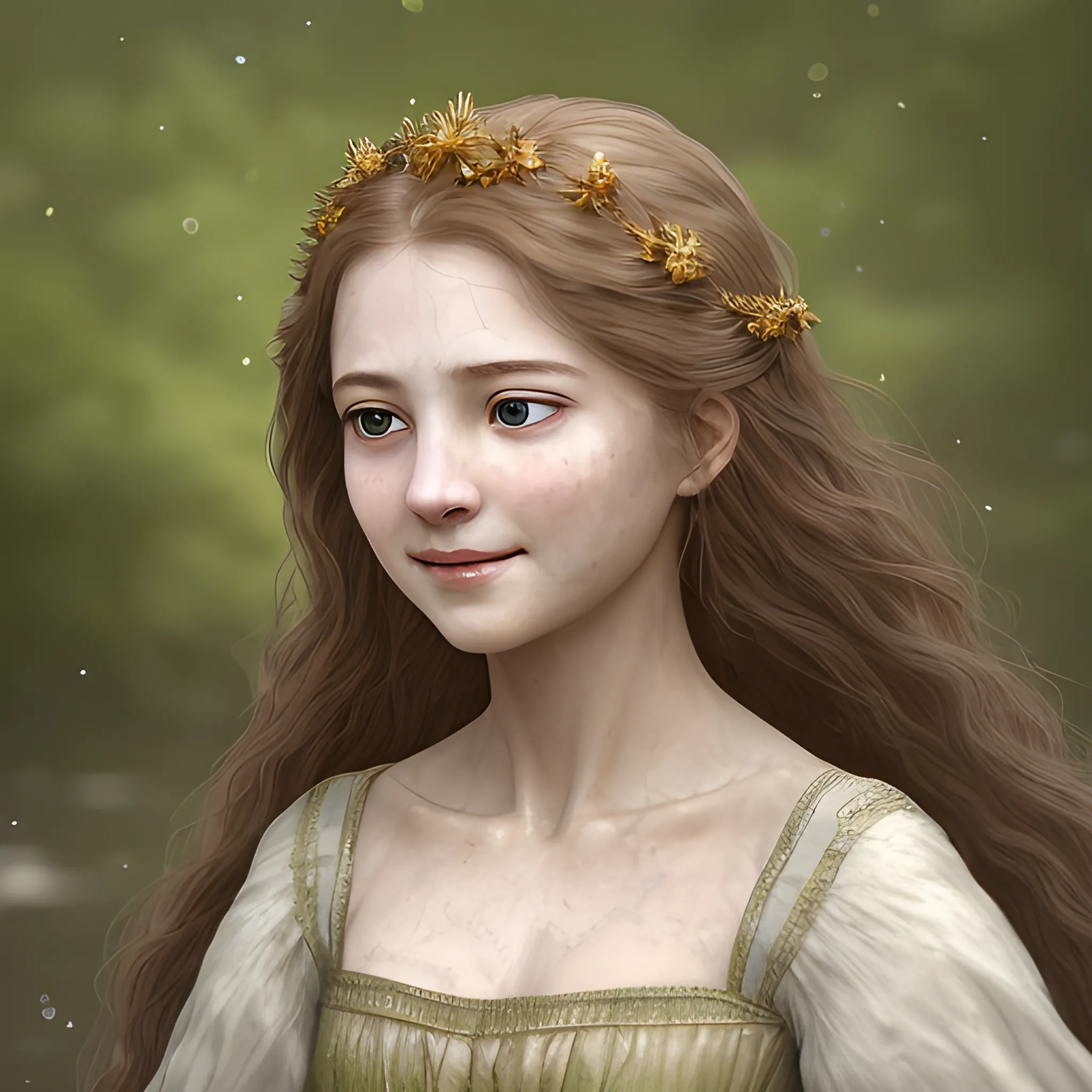
Isabella has a graceful and refined presence , her features reflecting her human lineage. Her fair complexion bears a soft , rosy hue , complementing her warm and compassionate nature. Though touched by the curse , her natural beauty still shines through , albeit with a touch of sorrow in her gaze. Her eyes , once sparkling with life and vitality , now hold a hint of melancholy. They are a mesmerizing shade of hazel , with flecks of gold and green that mirror the hues of a tranquil forest. They radiate kindness and depth , reflecting the empathy and understanding that she embodies. Cascading locks of chestnut-brown hair frame her face , flowing in gentle waves down to her shoulders. The hair retains its luster , albeit somewhat dulled by the curse. It carries a wistful charm , as if whispering tales of a forgotten joy. Isabella's figure is slender and graceful , her movements carrying an elegance befitting her noble upbringing. She adorns herself in simple yet tasteful garments , favoring flowing dresses of muted colors that match the melancholic air that surrounds her. Her countenance , once radiant with joy and laughter , now bears a touch of sadness. Though the curse has taken its toll , her inner strength and resilience still shine through , and a warm smile can occasionally grace her lips , offering glimpses of the joy she once experienced. Despite the Veil of Shadows that cloaks her , Isabella's beauty remains a poignant reminder of the vibrant and loving person she once was. Her appearance serves as a reflection of the tragedy that has befallen her and the enduring spirit that she carries within. ,

